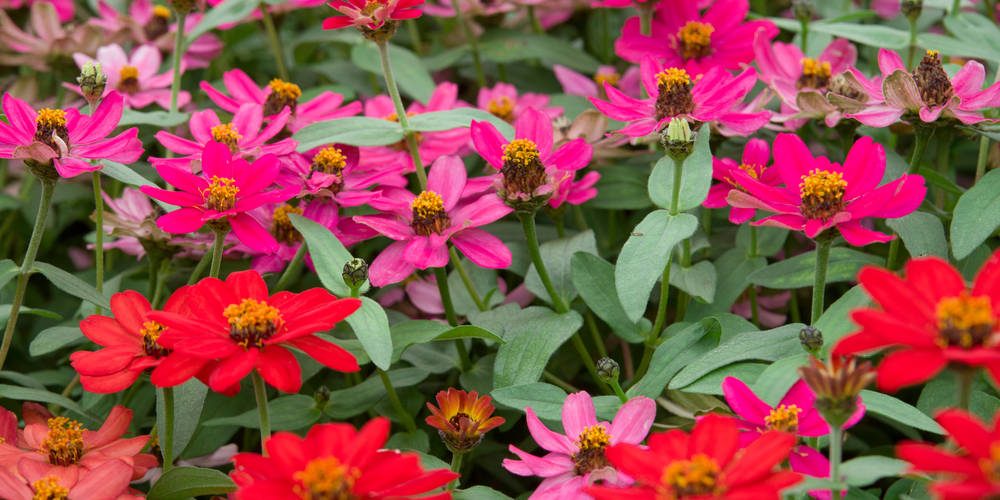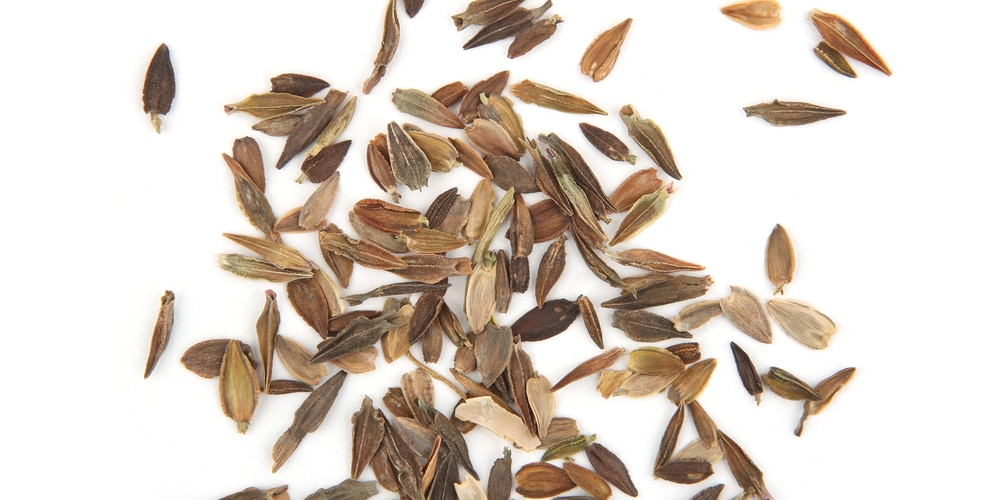Zinnias are one of the most cheerful flowers you can grow in your garden. Their bright, vibrant blooms can instantly add a touch of happiness to any garden. The massive burst of color that zinnias provide is unmatched by any other annual flower. An excellent plant that even beginners can grow, zinnias look elegant in your summer garden and a simple vase on your kitchen table. But can zinnias survive frost?
Read on to find out everything you need to know about growing and caring for zinnias and how to protect them from the cold.
Can Zinnias Survive Frost?
Zinnia cultivars may vary depending on the species, but they all share some basic growth requirements. Most zinnias thrive and bloom profusely in hot and sunny conditions. They also prefer well-drained soils with a moderate amount of nutrients.
With that being said, zinnias won’t be able to tolerate any kind of frost, and they are considered to be annuals in most growing zones. Unfortunately, this means that they will only last for one season and need to be replanted the following year.
They’re best suited to be grown in hotter regions or during the summer months. They can be planted as perennials in USDA zones 9-11 and annuals in colder USDA zones 2-8. The ideal germination temperature for zinnias is between 73-82°F.
Zinnia Growing Guide
While zinnias are pretty easy to grow, there are a few things you should keep in mind to ensure that they thrive. Here are some essential things to remember:
Planting Location
One of the most important things to remember when growing zinnias is to plant them in full sun. Their blooms are simply gorgeous but will not be as vibrant if they don’t get enough sunlight. Choosing a location that gets around 6-8 hours of sunlight every day is crucial to ensure that your zinnia blooms profusely throughout the season.
Soil Type
Prior to planting, ensure that the soil is mildly fertilized. Use a balanced organic fertilizer and mix it into the ground a few weeks before planting.
It’s also important to make sure that the soil is well-draining as zinnias cannot tolerate wet or soggy soils. If you have heavy clay soils, consider mixing in some organic matter such as compost to improve drainage.
Plant in Peat Moss
If you’d like to start zinnia indoors, especially if you’re in a colder region, consider planting the seeds in peat moss. Peat moss is a sterile and lightweight growing medium that helps to retain moisture. This will help to protect the delicate zinnia seedlings from frost damage when you transplant them outdoors.
Can Be Grown Indoors Given You Have Good Growing Conditions
While zinnias are outdoor plants and would survive mild winters in USDA zones 9-11. They can be grown indoors given you have the right growing conditions. If you live in a colder region, zinnias will survive indoors provided that you have plant lights, a south-facing window, and a warm room temperature. This is the only and best way to overwinter zinnias.
Provide Sufficient Water
Because zinnias love soaking up the sun, they will also need to be watered regularly. Make sure to water them at least once a week and more often if it’s particularly hot and dry outside. The best way to water zinnias is to use a soaker hose or drip irrigation system. This will help to avoid wetting the foliage, which can lead to fungal diseases.
How to Start Zinnias Indoors
If you want to get a head start on the growing season, you can start zinnias indoors about six weeks before the last frost date in your area. Because they’re sensitive to colder temperatures, it’s important that you start seeding once the soil has warmed up to at least 60°F.
To start zinnias indoors, you’ll need to use a sterile growing medium and plant the seeds in peat moss. You can either sow them directly into pots or flats, or you can start them in cell packs. Seedlings will germinate within one to two weeks.
Once the seedlings have germinated, you’ll need to provide them with plenty of light. This can be done by placing them under grow lights or a south-facing window. Keep the room temperature warm, around 70-75°F.
Once the temperatures outside have warmed up and there is no longer any danger of frost, you can transplant the seedlings outdoors. Be sure to acclimate them first by placing them outside in a shady spot for a few hours each day before moving them to their final location.
Can Zinnias Survive Frost: Final Thoughts
Although everyone wants to enjoy the beautiful and colorful display that zinnias provide, not everyone is fortunate enough to live in an area where they can survive the winter.
If you find yourself in this situation, you can still grow zinnias indoors, given you have the right growing conditions. It may take more effort from your end, but it will be well worth it when you see the beautiful blooms during spring.


